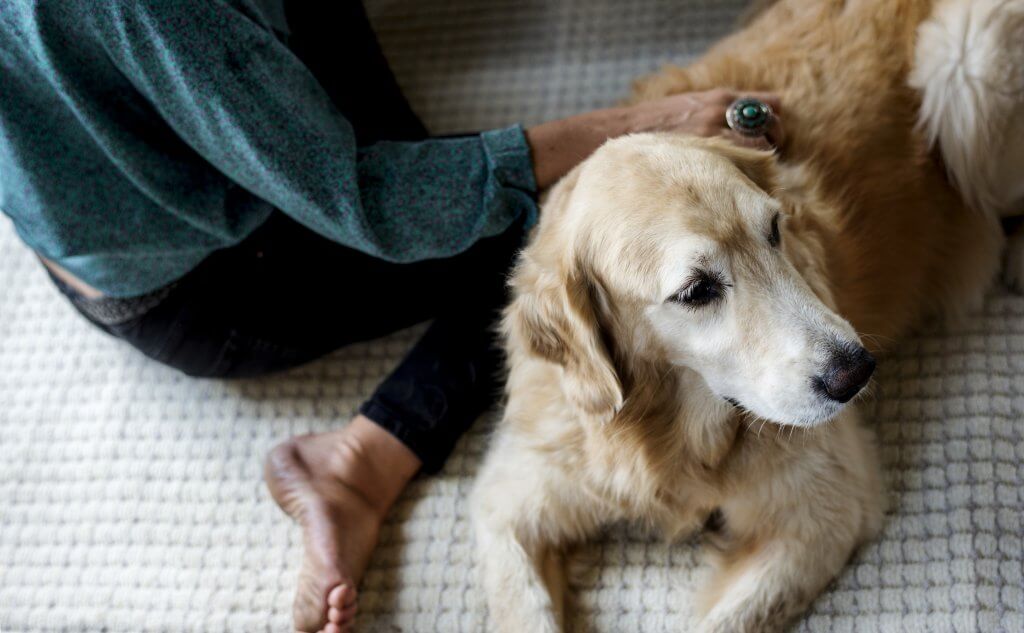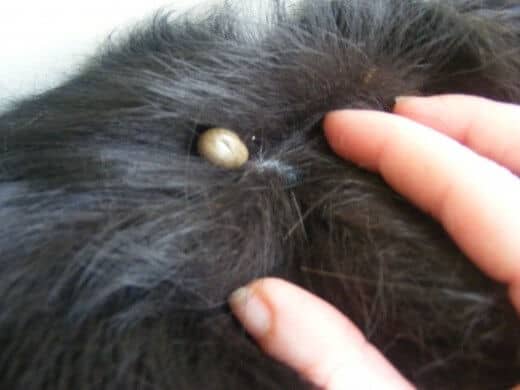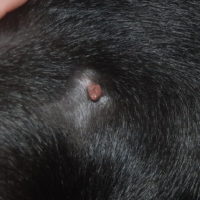
#SKIN TAG ON DOG CHEST SKIN#
Presenting as dry, crusty raised sores, these skin cell tumors appear on hairless and unpigmented areas like the lips, nose, eyelids and vulva, and are caused by excessive exposure to the sun. They commonly occur on the chest, legs, or abdominal wall and are more likely to develop in older breeds of advancing age. Usually developing deep under the skin’s surface or within the muscle, these groups of tumors appear as one firm lump and are not often painful. They must be removed by a vet, but can reoccur. More aggressive versions tend to grow on their legs and around their mouth. Canine melanomas look like dark lumps on the skin that slowly get bigger. That said, they can still be malignant or benign. Unlike human melanomas, those in dogs are not caused by sunlight, they involve the cells that give their skin pigment, and are usually much less malignant. Once diagnosed as MCT, it’s vital to check for any spreading to other organs. These tumors can have a very similar appearance to many others, so it’s essential to have them assessed by a vet. Most common in dogs over the age of eight, and from particular breeds, including Labrador retrievers, Boxers, Beagles, and Boston terriers. The most common canine skin cancer is the Mast cell tumor (MCT). They usually disappear within a few months with no treatment required. Best to get them biopsied, although vets can usually tell by their feathery appearance. They are most common in younger and older dogs, as well as those that are immunocompromised. Otherwise known as papillomas, warts are small skin growths that can appear quite suddenly on the skin, and are caused by a highly contagious virus called the papillomavirus. Sometimes a course of antibiotics will also be necessary. Abscesses generally require drainage and flushing with an antibacterial agent – usually done under sedation. AbscessĪn abscess is an accumulation of pus creating a swollen lump under the skin and is caused by infection. When mild, hives will often disappear on their own, but, if the reaction is more severe, a dose of antihistamine or steroid might be administered by your vet. Hives are caused by a reaction to a plant, sting or other allergen. They can develop as a rash either as round, red bumps, or raised, itchy bumps that can look round or oval. Otherwise known as urticaria, dogs can suffer with hives similarly to the way we do. It is still best to get them checked over, though, as they have a similar appearance to some cancerous tumors. They present as red, button-like lumps and normally disappear quite quickly. These ulcerated nodules are more common in younger dogs and usually found on their limbs. Slow to grow, a perianal adenoma is rarely painful, but may become infected or ulcerated. Most common in unneutered male dogs, but can also be seen in female dogs that have been spayed. These tumors relate to the sebaceous glands that surround a dog’s anus.

They often go away with treatment, but sometimes burst or need to be drained. They are similar to a pimple – slightly swollen and containing a light, creamy matter.

These cysts are hard bumps that are caused by a blocked sebaceous gland. Sebaceous cystĪnother harmless canine bump is a sebaceous cyst. A veterinarian will occasionally recommend that a lipoma be removed if it becomes too big or otherwise hinders the dog’s mobility (if it is sitting up in their armpit, for example). It can take half a year or more before they change noticeably. Lipomas are soft, fat cell tumors that usually grow very slowly and don’t tend to spread. The most common types of lumps found on canines are lipomas.

Any breed can develop skin tags, but they are more common in larger breeds. In some cases a dog will only have one or two, but others may develop many of them over their legs, armpits, back, chest and face.

Skin tags are fibrous growths that usually protrude from the surface of the skin via a stalk of skin. Just like us, dogs can develop harmless skin tags, particularly as they age. Here is a brief guide to the 12 most common lumps and bumps in canines. If your dog appears to be in any pain or if the area is changing quickly, swelling, or reddening, or if there is any sign of an opening or pus, consult with a vet urgently. That said, unless you are completely confident as to the nature of a lump or bump, get it seen to. Most lumps found on dogs turn out to be fatty, benign (non-cancerous) tumors. As dogs age they develop skin conditions and bumps that they never had before. Thankfully, the chances of it being cancerous is unlikely, although you most certainly need to have it checked out to be sure.ĭog skin issues are common in aging dogs. If you’re giving your beloved pooches some snuggles and you feel a lump or bump on their skin, chances are your mind will jump straight to the fear of cancer.


 0 kommentar(er)
0 kommentar(er)
